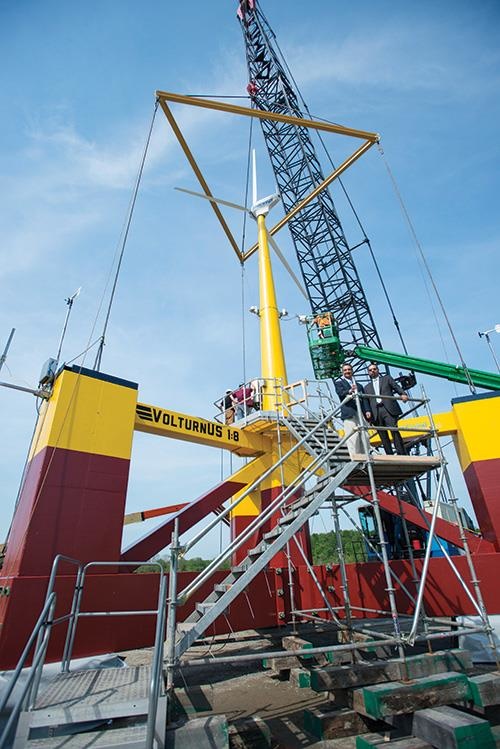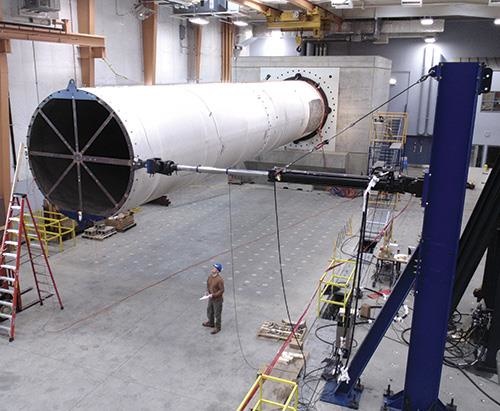News Release from Global Wind Energy Council
Wind Industry Profile of
GWEC - The markets: Renewable energy (2015)
Wind energy continues to dominate in this segment and remains, far and away, the world’s largest market for glass-fiber-reinforced composites. The 2014 edition of the Global Wind Energy Council’s (GWEC, Brussels, Belgium) Global Wind Energy Outlook reports that global wind power could reach 2,000 GW by 2030, and supply 17-19% of the world’s electricity. By 2050, wind power could provide 25-30% of global electricity. GWEC expected a dramatic increase in new global wind installations, reaching at least 47 GW in 2014, led by China but also a strong recovery in the US and record installations in Canada, Brazil, and South Africa.
MAKE Consulting (Aarhus, Denmark) forecasts 7.1% average annual growth for worldwide wind installations from 2013 to 2023. China supports a 1-GW upgrade in installations this year and as 2015 dawns, sets a new global annual grid-connected record with a projected 5.2% year-over-year growth. MAKE also expects North America to install 58.6 GW as of 2023, with almost one-third occurring between 2014 and 2016 due to an anticipated extension of the US production tax credit extension and other positive factors. The US is forecast to remain the dominant market in this region, with a CAGR of 17% from 2013 to 2023. Although a North American growth surge is forecast for 2014 to 2016, MAKE says Latin America presents a more consistent outlook through the whole decade.
The report also projects a promising outlook for offshore wind, with an expected 20.2% growth, on average, per year through 2023. MAKE predicts growth beyond 2019 will average at least 4 GW per year. Although the business case for offshore wind farms is compelling, installing offshore turbines is no easy task. Deep water along many coastlines, however, precludes a steel-pile foundation. As developers confront regions where shallow water is scarce, a different approach is necessary — specifically, floating foundations. Floating turbine concepts, in fact, are abundant, says Main(e) International Consulting LLC’s (Bremen, Maine) offshore wind expert Annette Bosler. “This year may become a boom year for various European launches, if projects stay on track,” she points out.

Wind turbine blade manufacturers are still, far and away, the biggest producers of glass-reinforced composites. Applications could soon includes blades, towers (see next image) and, possibly, buoyancy systems for floating turbid systems stationed in deep offshore waters that precede the use of the convention steel-pile foundations used in shallow waters. The VolturnUS, developed by the University of Maine (Orono, ME, US) and the DeepCWind consortium, is shown here, but is neither the first nor the biggest system in progress. Source: UMaine
In the U.S., the University of Maine’s (Orono, Maine) Advanced Structures and Composites Center (ASCE), at the head of a consortium called DeepCWind, celebrated Sept. 5, 2014, a successful first year of operation of its 1:8-scale floating turbine deployed off Castine, Maine. The UMaine effort, however, was leapfrogged in 2014 by floating turbine initiatives elsewhere. Principle Power Inc. (Seattle, Wash.) reported on Feb. 6, 2014, that the Bureau of Ocean Energy Management (BOEM) approved a commercial lease for its WindFloat Pacific project, 30-MW of full-scale turbines, offshore of Coos Bay, OR, US.
But progress in Europe outstripped U.S. efforts. Vestas Wind Systems A/S (Randers, Denmark), for example, deployed the first offshore project worldwide, integrating a wind turbine with a full-scale semisubmersible floating structure off the Portuguese coast. Others are following. And in the wake of the 2011 tsunami-related nuclear disaster in Fukushima, Japan, that country’s political leaders introduced more attractive financial incentives for offshore wind farm development. In response, a host of Japanese firms announced plans to develop conventional, fixed-foundation offshore wind farms. But a recently announced project, known as Forward (Fukushima floating offshore wind farm demonstration), will be delivered by a consortium of 11 companies and join two floating scale pilots already in Japanese waters.

Floating turbine technology has spurred new interest in composite turbine towers, as a lighter, more saltwater-resistant alternative to conventional steel towers in offshore wind farms.UMaine and its DeepCWind consortium partners have already tested a 1:2-scale bolted composite tower built by Ershigs to prove the tower design for full scale. Ultimate strength and fatigue resistance results are favorable. Source: UMaine
According to Bloomberg New Energy Finance (BNEF, New York, N.Y.), Mexico Guatemala, El Salvador, Honduras, Nicaragua, Costa Rica and Panama are pushing investment in renewable energy to new highs. Clean energy investment in Mexico totaled US$1.3 billion in the first half of 2014, compared to US$1.6 billion in the whole of 2013. Investment in Central America was at US$317 million for the first half of 2014. Mexico and Central America are likely to install just over 1 GW of wind power capacity this year, with potentially another 1.3 GW in each of 2015 and 2016.
To receive more information on this article, our Newsletter or find out more about what w3.windfair.net has to offer, please, do not hesitate to contact Trevor Sievert at ts@windfair.net.
Please don't forget to follow us on Twitter: w3.windfair.net on Twitter
w3.windfair.net is the largest international B2B internet platform in wind energy – ultimately designed for connecting wind energy enthusiasts and companies across the globe.
- Source:
- Global Wind Energy Council / Composites World
- Author:
- Edited by Trevor Sievert, Online Editorial Journalist / by GWEC / Composites World
- Email:
- ts@windfair.net
- Link:
- www.gwec.net/...

